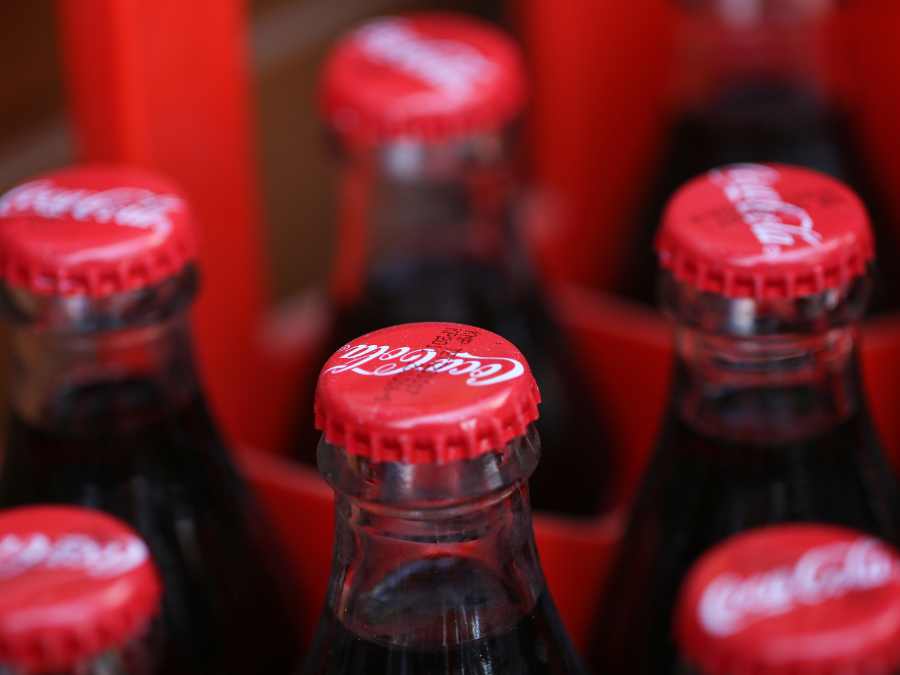
The Coca-Cola Co. beat analyst expectations for both revenue and profit in its financial first quarter, bolstered by resilient demand for CSDs, price increases and a “resumption of consumption” in China.
Speaking after the Powerade brand owner booked a 5% increase in both revenues and comparable earnings per share (on a non-GAAP basis), CEO James Quincey said performance was “within the bounds of our expectations and our plans”.
He added, however, the group was not adjusting its full-year guidance (of organic net revenue growth of 7-8%, and EPS growth in the 7-9% range) because “the outlook has a degree of uncertainty”.
“Overall the first quarter was strong,” Quincey said. “We’re maintaining guidance. We still feel confidence in our guidance and we’re well equipped. The outlook has a degree of uncertainty in it. That’s I think more elevated than pre-Covid in terms of the direction of travel of inflation, both the consumers reaction to it and the input side.”
In response to rising input costs, The Coca-Cola Co. has increased its prices in many global markets, leading to the average selling prices of the group’s drinks climbing 11% in the first three months of the year.
In February, the company said it would continue to take pricing action at a moderating pace, despite its rival PepsiCo pausing its own hikes.

US Tariffs are shifting - will you react or anticipate?
Don’t let policy changes catch you off guard. Stay proactive with real-time data and expert analysis.
By GlobalDataSpeaking on Monday (24 April), Quincey said it was important the group was able to “work both ends of the spectrum” and offer both affordable and premium options to consumers.
“Clearly, as over time there has been an increase in disparity of income in any given country, the need to match the consumer across a broader range of price points has gone up,” he said. “So you see both more opportunity and more need to have a foot in affordability and the other foot in premium. Both of those ends of the spectrum have been going up over time as we seek to meet the consumers where their pockets are, and allow them to stay in our franchise.”
On how consumer demand was holding up in response to inflation, Quincey reiterated The Coca-Cola Co.’s belief that “consumers have been differentiating by category”, but that CSDs with strong brand equity would be able to take stronger action on price.
“The elasticities on water have been stronger than they have on soft drinks,” he said. “Clearly, consumers have been differentiating by category and brand strength and whether the brand or the category has the right to do the pricing, even if the pricing is largely cost driven. That has definitely been a feature of recent quarters.”
Quincey said The Coca-Cola Co. was seeing signs of pricing starting to moderate, adding the Bodyarmor brand owner would look at offering “slightly more promotions” later in the year to address concerns over affordability of its brands.
“We see pricing moderating, which means – in the context of markets like the US or Europe – the reduction in the level of cycle price increases,” he said. “We may as we go forward see slightly more promotions as we as we look – for those consumers that are under pressure – to offer slightly better affordability options, but we’ll be balancing that with investments in premiumisation, whether that be categories or packaging.”
The Coca-Cola Co. on China
Asked about The Coca-Cola Co.’s fortunes in China, meanwhile, Quincey said its performance in the country was “getting better” but revenues remained behind 2019 levels.
“In China, certainly [we’re seeing] a pattern of consumer behaviour not unlike when the US and Europe opened up,” he said. “There has been a resumption in consumer activity. There was a rebound of consumption with Chinese New Year which obviously fell in the first quarter, and we’re certainly seeing the performance in China getting better.
“We’ve been focused on bringing back our marketing and increasing availability in some of the rural marketplaces,” he continued. “Remember in Q2, we’ll be cycling the toughest part of 2022 for China but we remain cautiously optimistic.”
In the three months to 31 March, The Coca-Cola Co. reported revenues of $10.96bn, beating analysts expectations of $10.8bn.
Operating income fell by 1% – to US$3.37bn – but grew 15% on a currency neutral basis. Earnings of $0.68 per share, meanwhile, topped expectations of $0.64.
In a note to clients, Lauren Liberman, an equity analyst at Barclays, described the results as “financially better than expected”, noting they “downplay the strength seen across the P&L” from the CSD manufacturer.



